Introduction

At a time when the craze for fast cars and sedans was at an all-time high, there was an issue that prohibited people from enjoying being involved in the craze. That was the purchase price.
A petrol Maruti Esteem, one of the most affordable sedans during the early 2000s, would cost above Rs. 4.5 lakhs for the base model. People required high performance and fuel efficiency, it was the time when safety wasn’t a priority, and action movies were the norm to achieve blockbuster status. This only escalated further after the Dhoom movies, Don remake, Taarzan and Fast and the Furious movies promoted hooliganism. The original advertisement for the WagonR and the Bajaj Pulsar both displayed testosterone-triggering stunts.
Hooliganism was at its peak, and carmakers wanted to fulfil the wants of the common man looking for an affordable performance car. The stickering jobs and special edition colours of practical everyday cars like the Maruti 800 and Daewoo Matiz simply weren’t taken seriously anymore. The Tata Indica V2, in 2003 suddenly became one of the best sellers as it brought about a diesel engine (good for cab drivers as diesel was cheaper than petrol at Rs 24 in 2004) and a sporty body kit.
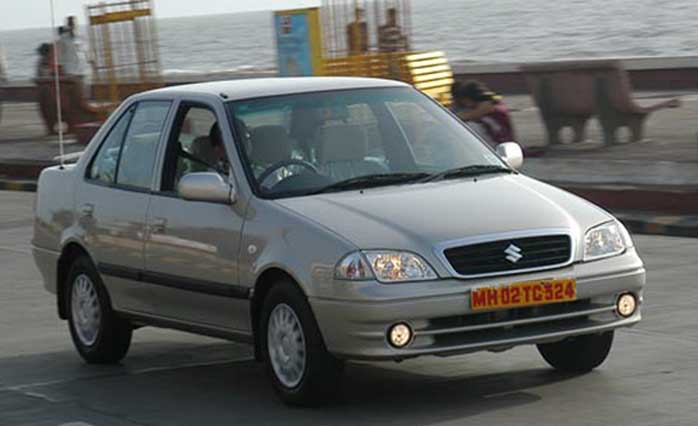
Maruti Suzuki Esteem
(Image source)

Maruti 800 Special Edition
That is when the 5 Speed version of the Maruti 800 came in. It was a short-lived model to be later replaced by the Alto but found tremendous success during its production years.
Fiat followed suit and brought a special edition Palio which was actually quicker and boasted a few new features and add-ons.
Hyundai brought big engines and interior space with the Getz hatchback and Maruti Udyog brought safety features and a global car for the first time, via the Swift.
Both the Getz and the Swift were commercially successful. They also broke the stigma of relegating fun cars to the elite class only. Now performance can be had in smaller packages.
The architecture changed from the small Zen in 2005 to the Swift in late 2005, and their proportional commercial success meant that the people were finally ready for a sedan alternative. The hatchbacks were now larger and offer around the same level of features and safety as a sedan.

Maruti Suzuki 800 5 Speed
(Image source)
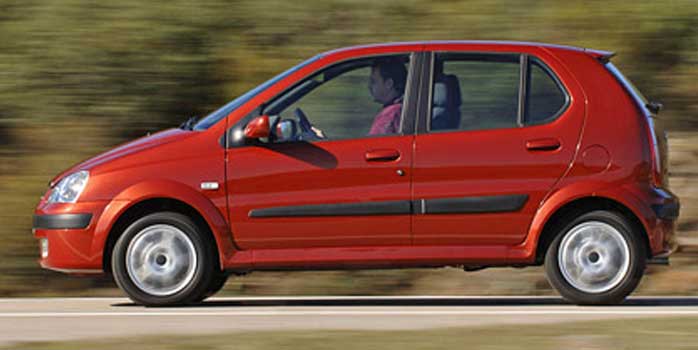
Tata Indica V2
(Image source)

Maruti Suzuki Swift and Swift DZire.
(Image source)
This is the time when hatchbacks became larger and their sedan alternatives became shorter. The Indigo CS was the pioneer of this segment, and this was done to blur the lines between hatchbacks and sedans, the other reason being an upgrade to hatchback taxis.
2002 - Fiat Palio S10
The Fiat Palio S10 was a high-performance variant of the Palio, which was only available in the signature Canary Yellow. It came with alloy wheels, rear spoilers and a rear wiper. It had fenders on both sides which were pasted to the body. It also had a spoiler covering the entire rear glass. Mechanically, Gear 3 and Gear 5 were short ratios for improved mid-range.
There was a production run of only 500 units.

Fiat Palio S10 front view

Fiat Palio S10 Front Three Quarter View
(Image source)

Fiat Palio S10 Rear Three Quarter View

Fiat Palio S10 Rear Three Quarter View

Fiat Palio S10 Side Profile
(Image source)
The Fiat Palio S10 was special in being a legitimate high-performance car than just being a marketing gimmick. It received a lot of badges of Sachin Tendulkar’s signatures. The owners would receive a certificate of authenticity, an autobiography book of Sachin Tendulkar and a cricket bat signed by the maestro himself.

Autobiography book of Sachin Tendulkar penned by his brother Ajit Tendulkar
(Image source)
2003 - Maruti Suzuki Zen Carbon and Steel
The Maruti Suzuki Zen Steel and Classic were two colour options for the three-door versions. The cars were initially export models meant for sale in Europe, but due to some inconvenience, Suzuki had no option left but to sell them in India itself. There were a total of 600 units, of two colours each.
The black version was called Carbon and the silver version was called Steel.

Maruti Zen Classic front three quarter view
(Image source)
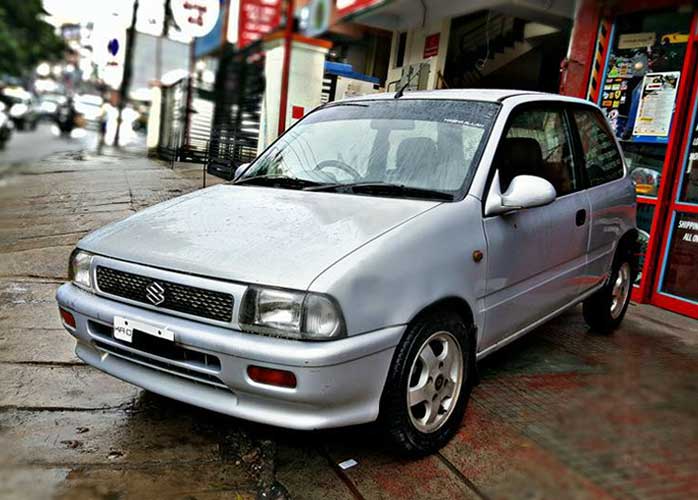
Maruti Zen Steel Front Three Quarter View
(Image source)

Maruti Zen Steel Rear Three Quarter View
(Image source)
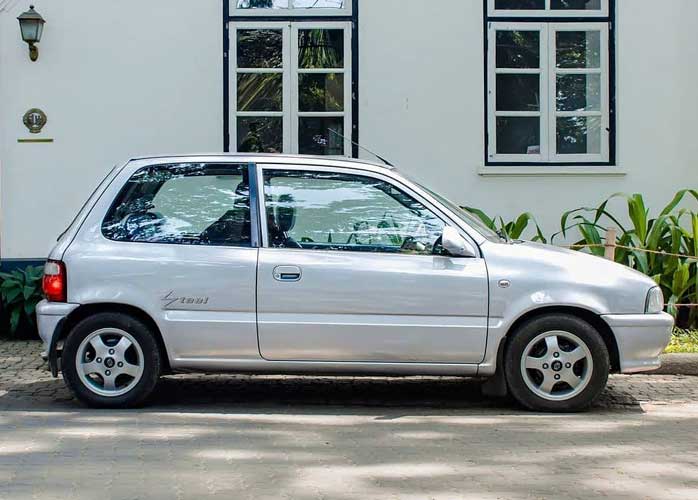
Maruti Zen Steel Side Profile
(Image source)
2004 - Hyundai Getz
The Hyundai Getz was launched in 2004 as the first premium hatchback in India. It offered standard body-coloured bumpers, an engine above 1 L in size and at a starting price of around Rs 5 lakhs, which pit it directly against sedans. The Hyundai Getz, unlike other hatchbacks, was dimensionally similar to sedans (except the length) and pitted as a 5-door sedan alternative.
Unlike the majority of the bright-coloured and sporty hatchbacks available in India, the Getz had metallic colours and a very mature design.

Hyundai Getz front three quarter view
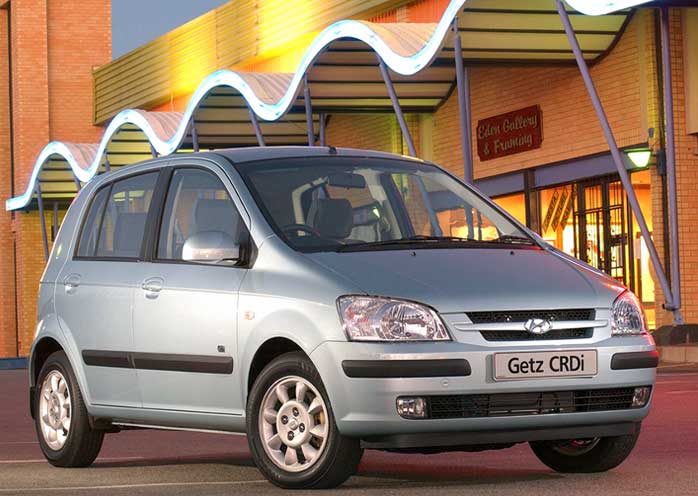
Hyundai Getz Front Three Quarter View
(Image source)
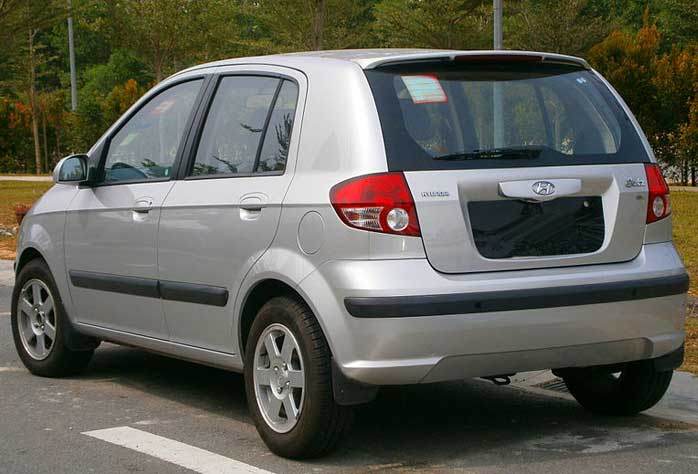
Hyundai Getz Rear Three Quarter View
(Image source)
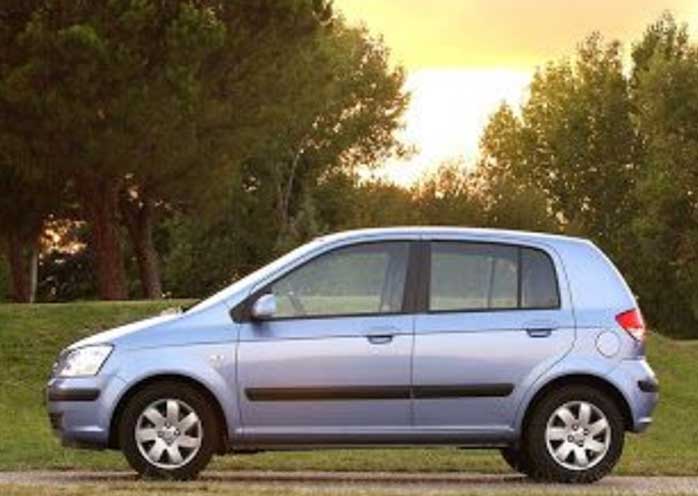
Hyundai Getz Side Profile
(Image source)
2005 - Maruti Suzuki Swift
The Maruti Suzuki Swift was the first time features like ABS and Airbags were advertised as a selling point. It offered big 14-inch wheels for the top-end versions and was a car at a global level in terms of recency. It was the first time in a long while that India had gotten a car which was launched at the same time as the rest of the world.
The Swift was modern, provided a floating roof design for the first time, and big wheels meant it had a sporty stance.

Maruti Swift front three quarter view
(Image source)
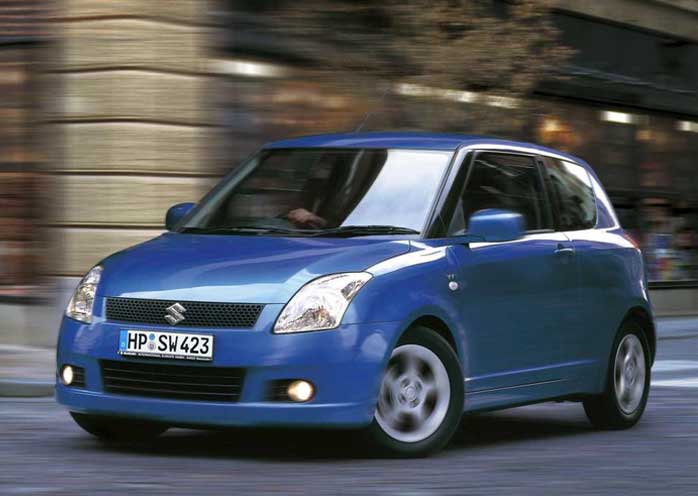
Maruti Swift Front Three Quarter View
(Image source)

Maruti Swift Rear Three Quarter View
(Image source)

Maruti Swift Side Profile
2007 - Hyundai i10
Following suit the Maruti Swift, the Hyundai i10 too was a global car for India. It was also the first time a hatchback received a sunroof as an option.
Having a sunroof now in almost any car is seen as a standard requirement and not having a sunroof in any variant is seen as a lack.

Hyundai i10 front three quarter view
(Image source)
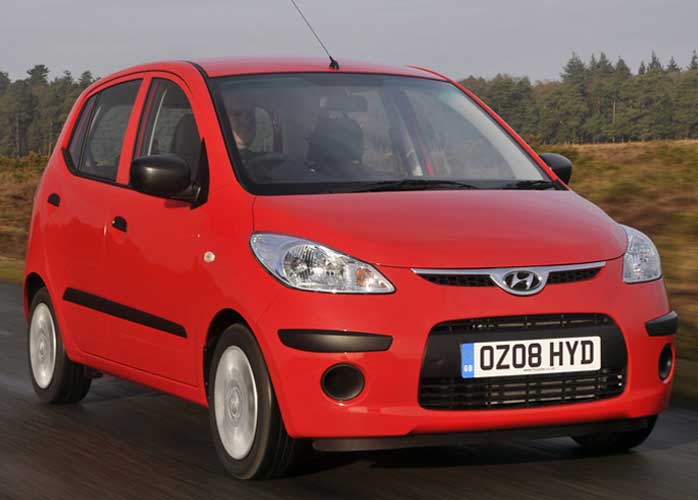
Hyundai i10 Front Three Quarter View
(Image source)
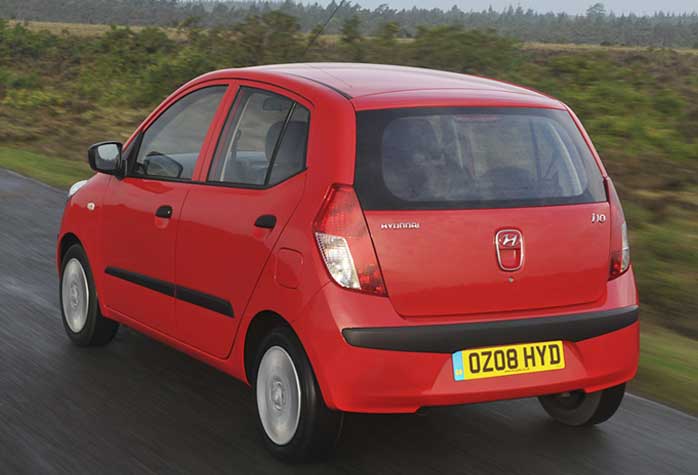
Hyundai i10 Rear Three Quarter View
(Image source)

Hyundai i10 Side Profile
(Image source)
2008 - Skoda Fabia

Skoda Fabia front view
(Image source)
The Skoda Fabia was another entrant in the premium hatchback segment. It had a floating roof design similar to the Maruti Suzuki Swift.
The Skoda Fabia was significant in the history of the city car world in India as it introduced projector headlamps for the first time in a hatchback.
2008 - Tata Indica Vista
The Tata Indica Vista was a bigger and premium alternative to the Indica, as it was bigger and provided a lot more features. The Vista also had a unique dashboard which had a centrally mounted center console.

Tata Indica Vista front three quarter view

Dashboard of the Tata Indica Vista.
2008 - Tata Nano
The Tata Nano was a rear-engine rear-wheel drive car, that had a taller seating stance and better headroom, as opposed to the Maruti 800. It was marketed as the most affordable car in the world and sported an unopenable rear, similar to the Maruti 800 SS80. It also had a single wiper blade and remains the only 2-cylinder Indian car in production in the 20th century. The later versions did provide an openable rear door and a usable boot space. The fuel inlet was accessible by opening the hood. It was below 3.4 m in length, shorter than even the Maruti 800, but was able to provide interior space and visibility comparable to bigger hatchbacks due to its tall boy design and semi-forward cab architecture.

Tata Nano front view
(Image source)
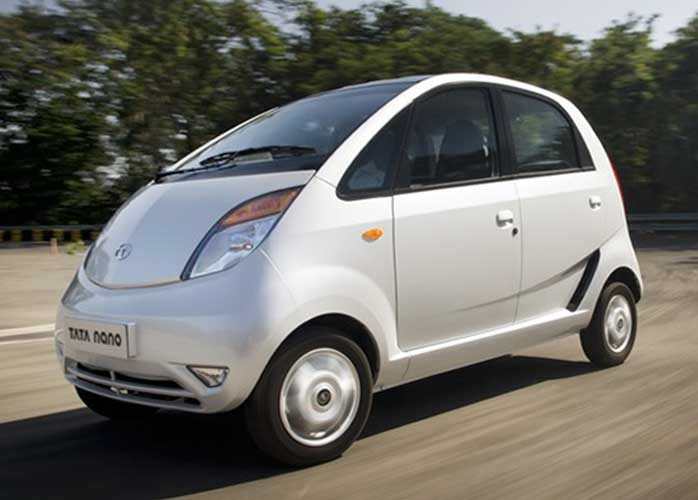
Tata Nano Three Quarter View
(Image source)
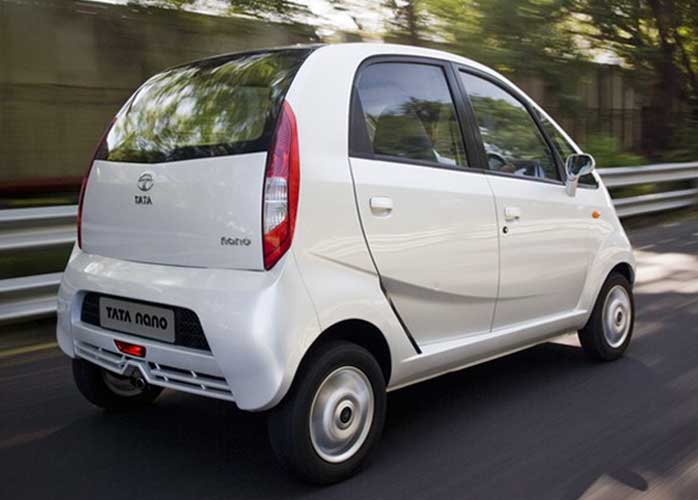
Tata Nano Rear Three Quarter View
(Image source)

Tata Nano Side Profile
(Image source)
2009 - Honda Jazz
The Jazz was a premium hatchback in the same segment as the Hyundai Getz, and the later Hyundai i20.
The Jazz sported a unique semi-forward cab design and a glass area ahead of the front doors. This provided enhanced visibility and remains one of the rare hatchbacks to provide an E – pillar.

Honda Jazz front three quarter view
(Image source)

Honda Jazz Front Three Quarter View
(Image source)

Honda Jazz Rear Three Quarter View
(Image source)
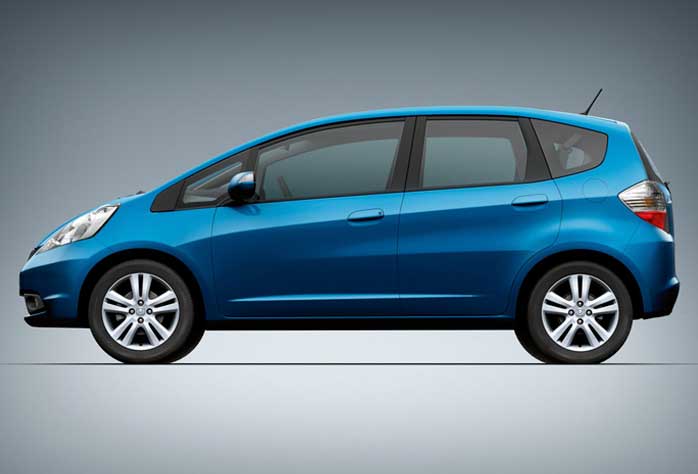
Honda Jazz Side Profile
(Image source)
2009 - Chevrolet
In December 2008, Karl Slym, the then General Manager of General Motors promised two all-new models from the Chevrolet lineup for India, the Beat and the Cruze. The Beat was launched on January 4, 2009, and was targeted at the urban user, as it was strictly a four-seater car.
It was a bold design for the time as it had a huge grill in the front, the placing of a rear door handle placed away from the panel to give it a three-door car look, and bright colours. The Beat exuded an air of hooliganism. It was radical and carried many design elements which continue to find relevance even today.

Chevrolet Beat front three quarter view
(Image source)

Chevrolet Beat Front Three Quarter View

Chevrolet Beat Rear Three Quarter View

Chevrolet Beat Side Profile
(Image source)
 Rear Door Handle mounted along the window area (Image source)
Rear Door Handle mounted along the window area (Image source)

Maruti Swift Side Profile, rear door style inspired by the Beat

Tata Altroz Side Profile, rear door style also inspired by the Beat
(Image source)

Mahindra KUV 1OO Side Profile, rear door style inspired by the Beat
The transparent clear lens type taillamps from the Beat influenced many contemporary cars like the Chevrolet Beat and Tata Nexon

The ORVMs fold the other way around too. This helps as a protective measure against breaking off during impact with badly behaved cyclists and other inconveniences while driving
(Image source)
2009 - Maruti Suzuki Ritz
The Maruti Suzuki Ritz was a taller and more practical alternative to the Swift. Due to its tallboy architecture and wealth of girth, it was more spacious than any tallboy hatchback. It had a unique concave rear design and the shape remains one of the most easily identifiable silhouettes.
Due to the higher seating position, the driver has a good view of the road. The MPV-like stance of the front windscreen lends to an airy feel inside the cabin.

Maruti Ritz front three quarter view
(Image source)
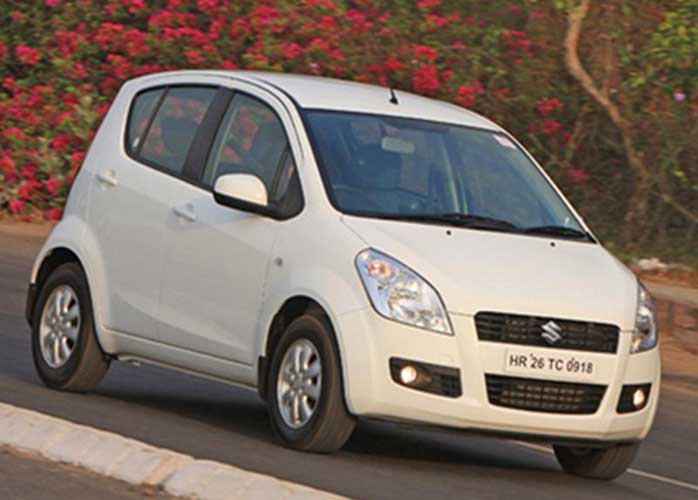
Maruti Ritz Front Three Quarter View
(Image source)

Maruti Ritz Rear Three Quarter View
(Image source)

Maruti Ritz Side Profile
(Image source)


 Cricket Bat signed by Sachin Tendulkar
Cricket Bat signed by Sachin Tendulkar  Certificate of Autheticity
Certificate of Autheticity  Front Three Quarter View of Skoda Fabia
Front Three Quarter View of Skoda Fabia Projector Headlamp in Skoda Fabia
Projector Headlamp in Skoda Fabia  Opening of the rear door handle
Opening of the rear door handle  Taillamp of the Chevrolet Spark
Taillamp of the Chevrolet Spark Taillamp of Honda Brio
Taillamp of Honda Brio Taillamp of Tata Nexon
Taillamp of Tata Nexon